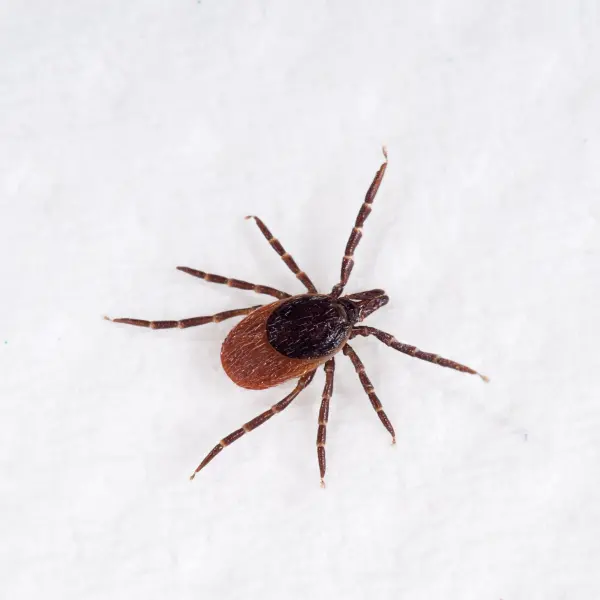
Deer Tick
Category Ticks
Actual Size: 3.6 to 5 mm
Characteristics: Oval-shaped body; mostly black in color; females have a distinct red color on their backs. When engorged, the body appears tan or beige.
Legs: 8
Antennae: No
Wings: No
Habitat: Commonly found in wooded areas, tall grasses, and shrubs.
Other Notes:
- Also commonly known as the blacklegged tick.
- Most active (and likely to bite) during spring and summer.
- Can transmit many diseases, such as Lyme disease, anaplasmosis, and babesiosis
- Can transmit Lyme Disease, the most common vector-borne disease in the U.S.
Deer Ticks in Florida
Deer ticks are also commonly known as blacklegged ticks. They’re distributed all across the USA and are the primary vector for Lyme disease transmission. They can be found anywhere with leaf litter and tall grass, where they lie in wait for their usual prey – the white-tailed deer. However, they aren’t picky; they’ll latch on to anything they can grab. That includes people and pets. Make sure to check yourself and your pets thoroughly after you go for a walk.
Deer Tick Habitat
Deer ticks prefer shady, moist areas. When they’re ready to feed, they’ll climb to the top of tall blades of grass or shrubs, raise their front legs into the air, and wait for prey to brush past. They cannot jump or fly; they can only climb onto their prey. You are most likely to encounter them in overgrown areas, along hiking trails, around woodpiles – anywhere that isn’t frequently maintained.
Deer Tick Behaviors, Threats, or Dangers
In 2023, Lyme disease was by far the most common vector-borne disease in the USA with over 475,000 human cases – miles ahead of the other contenders, like West Nile virus, dengue fever, and malaria, which are mosquito-borne and had around 2,000 cases apiece in the same year. As the most common vector for Lyme disease, it’s easy to see why you should take careful measures against deer ticks.
Before you venture into tick territory, apply an EPA-approved tick repellent. Wear long sleeves and long pants, preferably in a light color so ticks can be easily spotted. Tuck pants into socks. When you return from your hike, check yourself carefully; ticks like to hide in hair and in areas where clothes come into close contact with the body, like waistbands. Check under a dog’s collar, behind their ears, and between their paw pads.
If you find a tick, remove it carefully with tweezers; grasp the tick as close to the head as you can and pull it straight out, being careful not to twist it. Save the tick in a container in case it is needed for testing. If you notice signs of tickborne illness, such as the telltale “bullseye” rash of Lyme disease, seek medical attention right away. Tickborne illness is unlikely to transfer if the tick is removed within 24 hours, but it can occur before then.
If you’re dealing with an excessive number of ticks around your home or business, get in touch with the Arrow Environmental Services team to make a plan.
